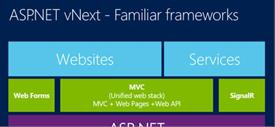What's Important in Financial Software Development?
Many of the answers to this question are fairly obvious: maintainability and scalability. These are, of course, core requirements in any software application.
But with finance software, maintainability and scalability are not as critical as they are in other industries. In fintech, the end-product is typically not a physical thing; rather, it's the value it generates, as measured by, for example, the change in share price over a given period of time.

So What’s Important?
Financial software should therefore primarily be optimized to maximize value. If the software is easy to maintain, is scalable, and is easy to learn, then the application's value will be maximized. These are the characteristics that are critical to any fintech product.
At the same time, developers and teams that build finance applications can take some key practical steps to further optimize the software. There's a lot of opportunities to improve the quality of software using the principles of test-driven development (TDD), refactoring, and, of course, agile and continuous development. As a rule, a professional financial software development company makes it easier to add tests for a new use case. Refactoring may eliminate unused code. And agile development provides an environment in which code quality can be improved.
Continuous Development
With financial software, it's important to ensure that there is no "cut-off" date for the development process. It's critical that the software is developed in such a way that it can be used without any interruption. This is much more difficult to achieve in a project where development and testing are done in a line of development.
In these cases, software that was developed earlier (either because there was a need to satisfy a deadline or because the specifications were written before the project's start) will often not be available when more functionality needs to be developed. Moreover, any changes to the code to accommodate a new feature or to fix an issue will require developers to modify the code. With financial software development, it is important to prevent such cut-off dates.
The problem of cut-off dates, with or without a waterfall project, can be illustrated with the example of a business process model. If a business analyst (or product owner) develops a process model in Word or Excel, there may be many requirements that aren't immediately apparent to the developer. The problem is that these requirements only emerge over time as the business's processes change. Developers need to work with the business analysts to implement these changes, but they are often unable to complete the adjustments to the model until the process changes are made.
Furthermore, when a process is implemented, there may be some features that weren't originally included in the model. There may also be enhancements or optimizations that can be made to existing project specs. If these requirements aren't addressed immediately, they can hinder development as new features or changes to existing features are made and require further testing.
To avoid such situations from happening, it is important to create a full-fledged project model from the very beginning, think through use cases/scenarios, and run user tests. As a result, you will get a straightforward project to work on, thus, being able to reduce development costs and ensure a smooth user experience.
Related Posts
Blackmail is a serious crime that can cause immense stress and fear.
In today's data-driven world, databases form the backbone of countless applications and systems that power businesses across industries.
It’s no longer a hidden fact that social media platforms like Facebook affect the mental health of users.
Relocating an IT company is a significant endeavor that involves careful planning, coordination, and execution.
Today maintaining office security has become an important concern for businesses of all sizes.
A registered office address is a fundamental requirement for any business entity, whether it’s a corporation, limited liability company (LLC), or partnership.













Comments
comments powered by Disqus